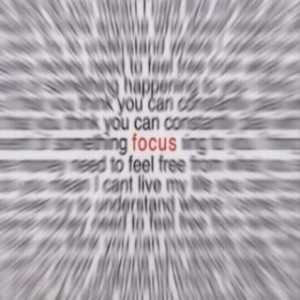Entries Tagged 'freelance copywriting' ↓
December 24th, 2008 — copywriting, copywriting tips, freelance copywriting
 Every writer, at one time or another, has been in the position where their creativity flows unchecked. They can’t stop writing. In certain circumstances that is great, but at other times it can be dangerous leading to ‘over-written’ copy.
Every writer, at one time or another, has been in the position where their creativity flows unchecked. They can’t stop writing. In certain circumstances that is great, but at other times it can be dangerous leading to ‘over-written’ copy.
But to be an expert freelance copywriter you have to learn that it isn’t all about being short, snappy and to the point. Sometimes the copy needs to be fairly lengthy. The trick is learning when which one is appropriate.
If your brief calls for short and snappy you have to be ruthless and cut your copy to the bone. There is no room for creative flair – your copy must be concise and to the point.
Quite often long copy is called for when writing for the direct mail market – believe it or not, people to actually read those long press ads that you see and those multi-page sales letters.
One famous example of long copy in press advertising was an ad for Merrill Lynch. It took up a whole page in the New York Times – seven columns, tiny type, no pictures and a total of 6,540 words! Guess what? It drew in 10,000 requests for a booklet mentioned towards the end of the ad*.
What can we learn from this? Well, in short, what matters the most is how interesting your copy is to the reader NOT its length. No matter how long your copy, if it isn’t interesting no one is going to read it. And if no one reads it, it isn’t going to sell. And if it doesn’t sell, your client will go out and find a new copywriter.
There is one golden rule to remember though when writing long copy (and short for that matter) – always plan, plan, plan. If you don’t you will turn off your reader and they will be lost forever.
*Write to Sell – The Ultimate Guide to Great Copywriting, Andy Maslen (p.81) – Link takes you to Andy’s Amazon page where you can find all his excellent books on copywriting
December 23rd, 2008 — copywriting, copywriting tips, freelance copywriting
 Before I begin I just wanted to make one thing clear – this series of articles won’t make you an effective copywriter over night. To become an expert freelance copywriter takes time and practice (and a bit of natural talent).
Before I begin I just wanted to make one thing clear – this series of articles won’t make you an effective copywriter over night. To become an expert freelance copywriter takes time and practice (and a bit of natural talent).
OK, that’s the disclaimer over and done with. Now for the first lesson…
Are you sitting comfortably? Then I’ll begin. Copywriting, or sales writing, is worth its weigh in gold when done properly. If you have been reading my other blogs you would already have learned how to identify your reader, learned how to plan effectively, sell the benefits of your product and how to implement AIDA.
Now though, I want to take a look at the actual writing. The persuasiveness of your copywriting all comes down to your ability to convey a convincing tone of voice, your choice of words and your ability to produce punchy sentences.
In this blog I want to concentrate on staying focused.
Here is a list of what you must focus on when writing:
Not a long list so it should be easy to remember. Everything you write must mean something to your reader. Let me use a fishing analogy here – if your line of words is taut, your fish (reader) will remain hooked, let it go slack and they will swim off towards one of your competitors.
It all starts at the beginning
The most important part of your writing is the initial sentence – this is your opportunity to hook your reader:
- Address them directly
- Create empathy to get their attention
- Talk to them
When you are writing, imagine you are holding a conversation with your reader. Engage them and keep their interest. If you don’t you will run the risk of them gazing out of the window, seeing one of your competitors’ posters and then they will be lost forever. So keep in interesting and avoid clichés.
Next time, I will address the brevity vs long copy debate.
This series of posts was inspired by the writing of Andy Maslen, and his book ‘Write to Sell’ (Chapter 11).
December 22nd, 2008 — copywriting, copywriting services, freelance copywriting

Congratulations! You have made it to the final hurdle. Over the past few days you have been learning how to grab your readers’ attention, get their interest, and create a desire for your product. At last the finish post is in site: now all you have to do is get them to take action.
Just because you have managed to create a desire for your product, doesn’t necessarily mean that your reader is going to buy. The best way to get your reader to take action is through the use of testimonials.
These are a great motivator and a tool that every freelance copywriter should have in their writing arsenal. People love to hear about the experiences of others. If your past clients have produced their own testimonials don’t edit them. They may contain the odd grammatical or punctuation error but this is exactly what you want – it makes them real.
Another way to get your readers buying is by offering free samples, statistics, a free trial or money-back guarantee. If you have these available why not use them all or a combination plus testimonials – just do whatever you feel necessary to get your reader to take action.
The call to action
If this is weak, the rest of your hard work would have been wasted.
They don’t have to be saved for the final paragraph. Sprinkle them throughout the sales letter or, if using email, use hyperlinks so once the decision to buy has been made your reader can act immediately.
Here are a few things to avoid when writing your CTA:
- Ambiguity is bad – don’t confuse your reader
- Watch your wordiness – you’ve made your pitch now get straight to the point
- Don’t be vague – leave them in no doubt as to what they need to do
Put simply, your CTA should be short, simple, direct and clear:
- Give them different ways to get in touch/place their order (e.g. email, fax, phone)
- Give them a clear and simple-to-complete order form
- Make it a command – ‘order now’ ‘order by 1st February’
There you go. That’s it. Your lesson is now over.
These techniques aren’t exclusively for sales letters. No matter what you are writing always remember: AIDA – Attention – Interest – Desire – Action and you can’t go wrong.
December 18th, 2008 — copywriting, copywriting tips, freelance copywriting, Suffolk copywriter
Are you guilty of filling your sales and advertising writing with jargon?
Come on, be honest. It is a very easy trap to fall into. After all, you speak it every day to colleagues so it becomes part of your natural vocabulary.
But guess what? It’s a real turn-off for those not ‘in the know’.
If you want people to read your articles, websites and sales literature with interest, you have to write clearly.
I have put together a Hubpage on this particular subject so follow this link to read about how copywriters don’t do jargon.
Merry Christmas.
Sally
Briar Copywriting – Freelance Copywriter
December 17th, 2008 — copywriting, copywriting services, freelance copywriting

Are you ready for the next step? Do you want to know what happens next? Well, now that you have honed your headline writing skills and got your readers’ attention, you have to arouse their interest in what you’re selling.
How do you do that? Well, let’s suppose your reader has a problem – they could be feeling stressed, bored or unfulfilled. Your job is to find a way to tie your product to their problem as the solution.
A metaphorical arm around their shoulder
Freelance copywriters could also be described as counsellors as we have to show our readers that we understand how they feel and then we promise to take the problem away. What do they have to do? Simply buy your product.
The golden rule here is to ensure you write about the solution not the problem – negativity will result in your letter being folded into an aeroplane.
Try to answer this: ‘How will my reader’s life be improved if they do what I want them to do?’ Answer it in the first sentence or paragraph – they’ll want the answer immediately. If you’re not sure what your reader really wants bring in as many benefits as possible and be specific.
Sell the benefits
Remember benefits are anything your reader perceives as valuable or worthwhile – something that will help them make/save money, save time, get them promoted, make friends etc.
Make sure it is the benefits that you are selling and not the features – yes, the product might be recyclable but that is a feature. The benefit would be that it helps preserve natural resources. Get the idea?
Sounds simple doesn’t it? Well, it will take practice to master this but it will be worth it. So now you can get your reader interested in your product because you have identified why your product will be of benefit to them. Brilliant!
But it doesn’t stop there. Just because they are interested and can see the benefits, doesn’t mean that they’ll simply hand their credit card over. You still have a bit more work to do before that happens.
The next stage is to learn how to create a desire for your product. See you in a day or so.
 Every writer, at one time or another, has been in the position where their creativity flows unchecked. They can’t stop writing. In certain circumstances that is great, but at other times it can be dangerous leading to ‘over-written’ copy.
Every writer, at one time or another, has been in the position where their creativity flows unchecked. They can’t stop writing. In certain circumstances that is great, but at other times it can be dangerous leading to ‘over-written’ copy.







